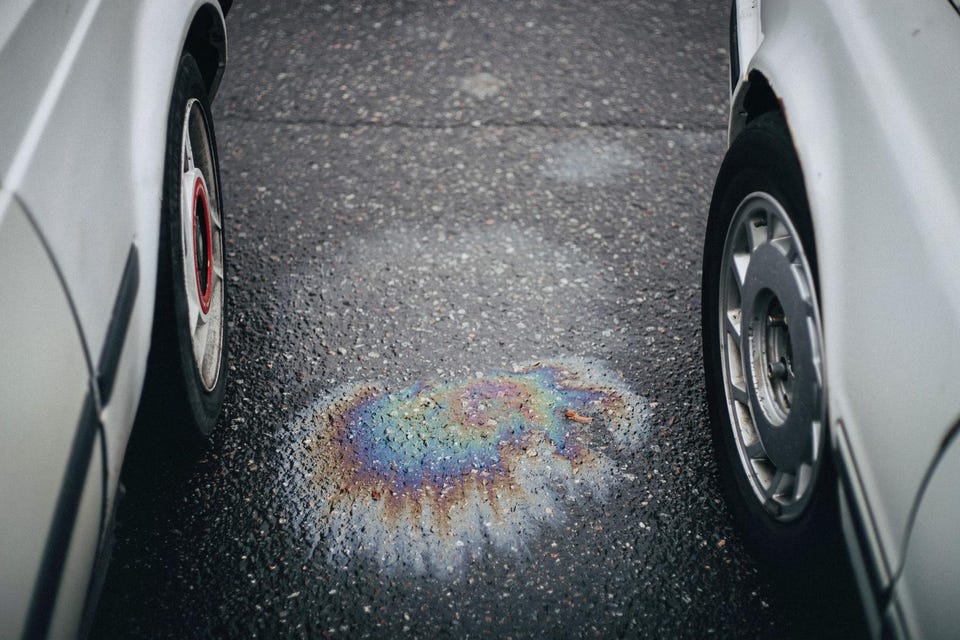Sustainability Top Source Of Ocean Oil Pollution Isn’t The Leaky Tanker, Pipeline Or Offshore Rig—It’s Your Car Jeff McMahon Senior Contributor Opinions expressed by Forbes Contributors are their own. From Chicago, I write about climate change, green technology, energy. Following New! Follow this author to stay notified about their latest stories.
Got it! Oct 5, 2022, 12:00am EDT | New! Click on the conversation bubble to join the conversation Got it! Share to Facebook Share to Twitter Share to Linkedin Petroleum from land-based sources, especially leaks from automobiles, is by far the number one . . .
[+] source of oil pollution in the ocean. getty All the petroleum spilled by leaky oil tankers, broken pipelines and toppled drilling rigs—including the Deepwater Horizon—pales in comparison to the amount that washes into the sea from land-based sources, primarily motor vehicles, according to a new report from the National Academies of Sciences, Engineering, and Medicine. From 2010-19, those land-based sources leaked an estimated 1.
2 million metric tons of petroleum each year that found its way to the sea, according to the report, compared to 380 tons per year from pipeline spills, 200 tons from tank vessel spills, and 66,500 tons from platforms and other extraction activities. Most of that last figure—57,000 tons of it—derives from the 2010 Deepwater Horizon disaster in the Gulf of Mexico. “The top source of oil in the ocean is land-based runoff, at an estimated volume up to 20 times higher than was reported two decades ago,” according to a press release accompanying the report.
“Most of this pollution occurs through water from rain or snowmelt carrying oil, primarily from cities and vehicles, to rivers and ultimately into the ocean. Runoff from highways, parking lots, vehicle washing, and vehicle fluid leaks all contribute. ” The second highest source is natural oil seeps, at about 100,000 tons per year.
The report cautions that government agencies, including the EPA, are not monitoring rivers and harbors for runoff from “non-point sources,” such as cars and gas stations, which makes it difficult to quantify the amounts that actually may be reaching the sea and the resulting effects. Land-based pollution appears to be much worse than it was 20 years ago, when the prior edition of the same report estimated it at 54,000 tons per year. However, the report sees some prospects for improvement in the next 20 years thanks to motor oil recycling, improved fuel efficiency and the electrification of transportation.
MORE FOR YOU Hiring Refugees: How One Big Factory Did It Today’s ‘Quordle’ Words, Answers And Clues For Wednesday, October 5 Nick Mason On Revisiting Early Pink Floyd During Saucerful Of Secrets Tour These “personal and industrial practices for controlling nonpoint pollution. . .
will have the added benefit of reduction in land-based runoff. ” Follow me on Twitter or LinkedIn . Check out my website .
Jeff McMahon Editorial Standards Print Reprints & Permissions.
From: forbes
URL: https://www.forbes.com/sites/jeffmcmahon/2022/10/05/the-top-source-of-ocean-oil-pollution-isnt-the-leaky-tanker-pipeline-or-offshore-rig-its-your-car/



